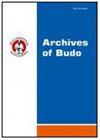2010年国际柔道联合会规则修订后,腰带以下攻击中手部技术战术行为的转变
IF 1.5
3区 医学
Q3 SPORT SCIENCES
引用次数: 21
摘要
背景:根据2010年的规则修订,禁止用手臂或手在腰带以下进行攻击,如果第一次犯规,将被处以半身制。这个严格的规定一定影响了选手在比赛中使用腰带以下的手和手臂的技战术行为。本研究的目的是研究2010年规则修订前后男子比赛中手法带下攻击技战术行为的变化。材料与方法:对2009年东京大满贯和2010年巴黎大满贯的436名男子选手进行了调查。使用全日本柔道联合会的dvd。五手技术使用在以下的皮带机动参考在Kodokan手册进行了调查。分析师们一致决定,竞争对手的手法是否可以被归类为所研究的五种手法之一。结果:kibisu-gaeshi的使用明显减少(p<0.05)。使用sukui-nage对抗对手的交叉抓(p<0.05)。不使用腰带以下手或手臂抓握的kata-guru的使用显著增加(p<0.01)。德国、英国和日本选手的腰带以下手技使用显著减少(p<0.01, p<0.05, p<0.05)。结论:Sukui-nage越来越多地用于对抗对手使用交叉抓;卡塔古鲁玛技术经历了风格的转变。另一方面,随着规则的修订,kibisu-gaeshi不能得到有效的利用。本文章由计算机程序翻译,如有差异,请以英文原文为准。
The transformation of technical-tactical behaviors for hand techniques used in attacking below the belt after the 2010 International Judo Federation rule revision
Background Due to a 2010 rule revision, attack with the arms or hands below the belt is prohibited, with the penalty being hansoku-make for the first offense. This strict rule must have affected competitors’ technical-tactical behaviors with regards to using hands and arms below the belt in contests. The purpose of the present study is transformation of technical-tactical behaviors for hand techniques attacking below the belt in men’s contests before and after the 2010 rule revision. Material & Methods: 436 men’s contests from the 2009 Grand Slam Tokyo and the 2010 Grand Slam Paris were examined. DVDs of the Federation of All Japan Judo were used. Five hand techniques used in below the belt maneuvers as referenced in the Kodokan manual were investigated. The analysts unanimously decided if the techniques performed by competitors could be categorized within one of the five hand techniques studied. Results: Use of kibisu-gaeshi significantly decreased (p<0.05). Use of sukui-nage used in countering an opponent’s crossguard grab significantly increased (p<0.05). Use of kata-guruma not utilizing below the belt hand or arm grabbing significantly increased (p<0.01). German, English, and Japanese contestants significantly decreased in their use of hand techniques below the belt (p<0.01, p <0.05, p<0.05, respectively). Conclusions: Sukui-nage was increasingly used to counter the opponent’s use of the cross-guard grab; the kata-guruma technique underwent a style transformation. On the other hand, kibisu-gaeshi could not be used effectively with the rule revision.
求助全文
通过发布文献求助,成功后即可免费获取论文全文。
去求助
来源期刊

Archives of Budo
SPORT SCIENCES-
CiteScore
2.80
自引率
47.60%
发文量
0
审稿时长
>12 weeks
期刊介绍:
Archives of Budo is an international peer reviewed journal publishing articles on various aspects of the sports sciences covering education and research in martial arts and combat sports, and related areas like biomechanics, kinesiology, medicine, psychology, sociology, technologies of sports equipment, research in training, selection, performance, survival, and other interdisciplinary perspectives.
Archives of Budo editors endorse the principles embodied in the Helsinki Declaration and expect that all research involving humans has been performed in accordance with these principles. All human studies must have been approved by the investigator''s Institutional Review Board. A copy of the relevant documentation should be included with the manuscript. Furthermore Archives of Budo follows the ICMJE''s Recommendations for the Conduct, Reporting, Editing and Publication of Scholarly Work in Medical Journals.
Archives of Budo provides free, immediate and permanent online access to the full text of all articles distributed under the terms of the Creative Commons Attribution Non-commercial License http://creativecommons.org/licenses/by-nc/4.0), which permits use, distribution, and reproduction in any medium, provided the original work is properly cited, the use is non-commercial and is otherwise in compliance with the license.
 求助内容:
求助内容: 应助结果提醒方式:
应助结果提醒方式:


